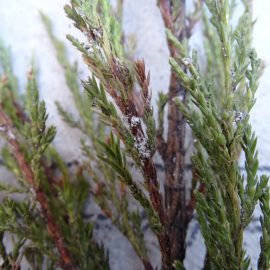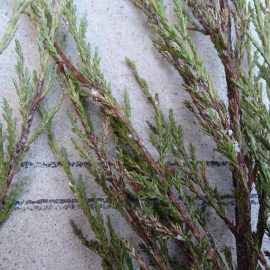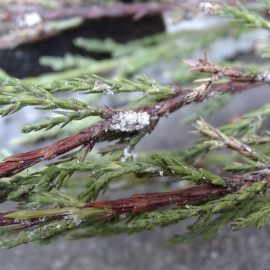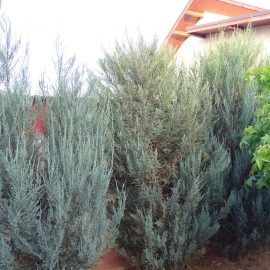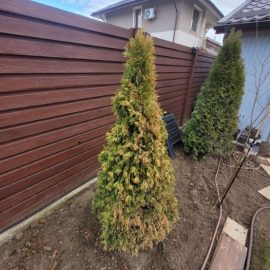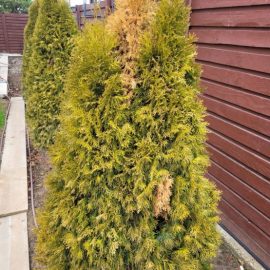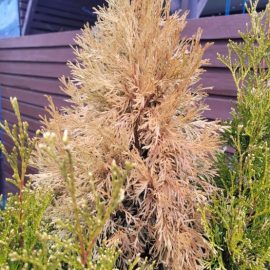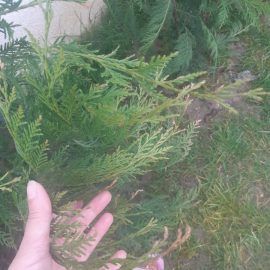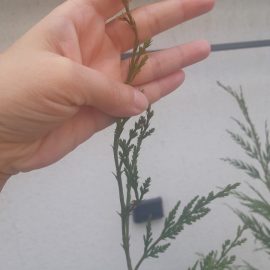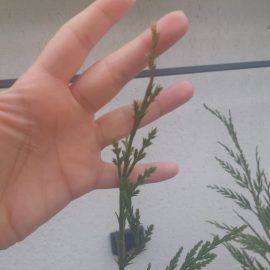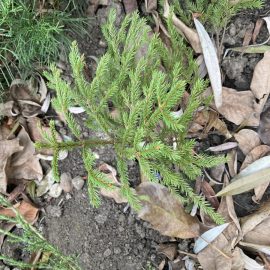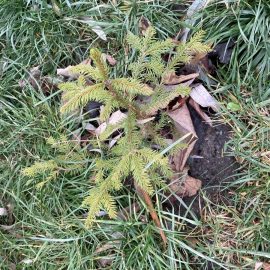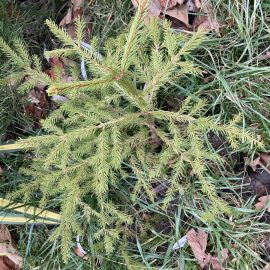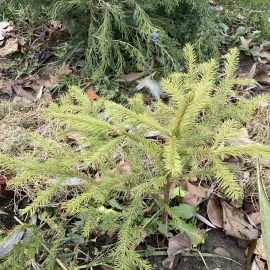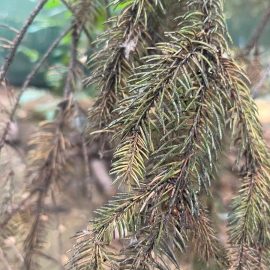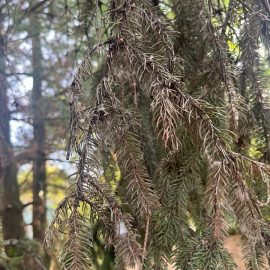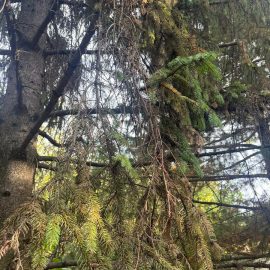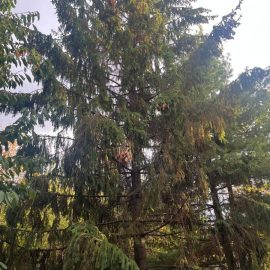Thuja, planting guide and care work
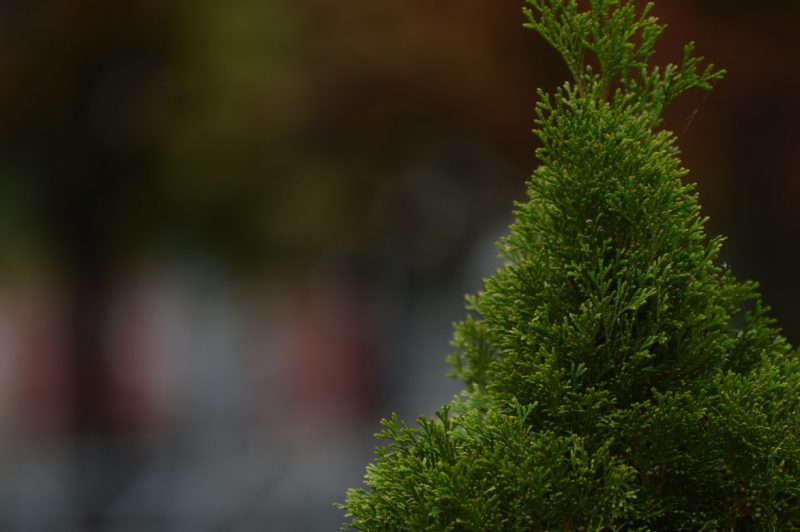
Thuja is a genus of coniferous trees and shrubs in the Cupressaceae family, native to North America and East Asia. They are evergreen plants that can grow from 3 to 60 m in height. Most species have a straight trunk, covered with fibrous, reddish-brown bark. The tendrils have a flattened shape, grow on a single level. The leaves are scaly, between 1 and 10 mm long. By the age of 1 year, it has acicular leaves. They are monoecious plants and the female cones are ovoid or oblong with 8-12 scales. These contain small, flattened seeds. The male cones are small, imperceptible, located towards the top of the branches. They are ornamental trees, usually planted in gardens and parks. They can be found as solitary specimens or in groups, but especially in the form of hedges.
Species and varieties
There are mainly 3 species of decorative Thuja.
Thuja occidentalis – it reaches heights of 20 m and forms a pyramidal crown. The leaves are matte green on the top side and pale green on the underside. In winter they can have a slight shade of bronze. It includes many varieties such as: Albospica, Aureospica, Fastigiata, Pendula, Filiformis, Globosa, Umbraculifera, Compacta, Brabant, Smaragd.
Thuja orientalis – it reaches heights of 5 – 10 m and it forms a very thick crown. The leaves have the same shade of dark green on both sides. Sometimes, in winter, the leaves become purple-brown. Varieties: Aurea, Aurea nana, Cristata, Densa glauca, Gracilis.
Thuja plicata – in its natural environment, it grows as a size I tree, with a height between 30 and 60 m. In some countries, it is shorter. It develops a narrow, pyramidal crown, with dense branches, which reach the ground level. The stem is straight and broad at the base. The leaves are dark green, with two x-shaped stripes on the underside. Varieties: Atrovirens, Cuprea, Dura, Fastigiata, Gracilis aurea, Pendula, Pumila, Variegata.
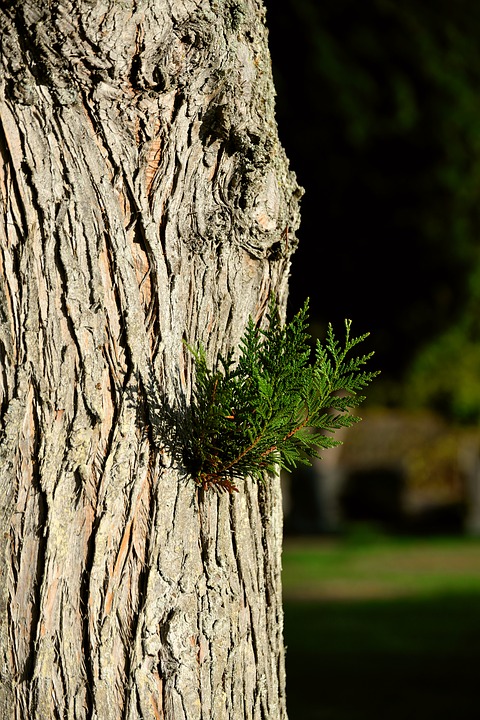
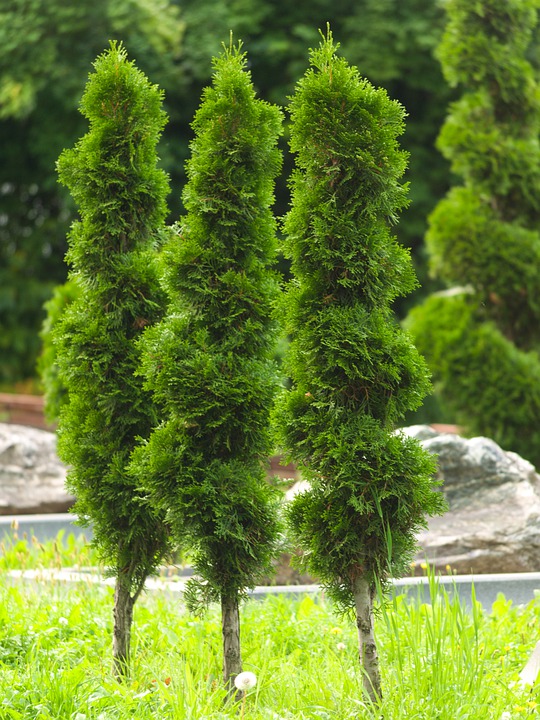
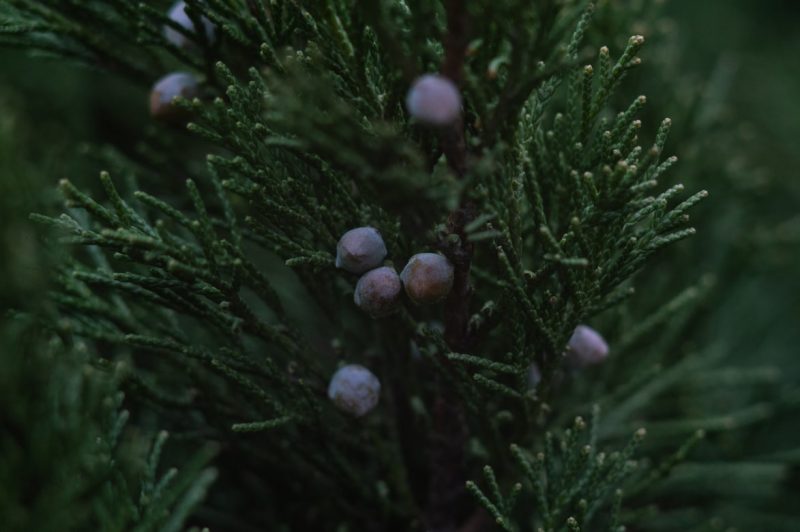
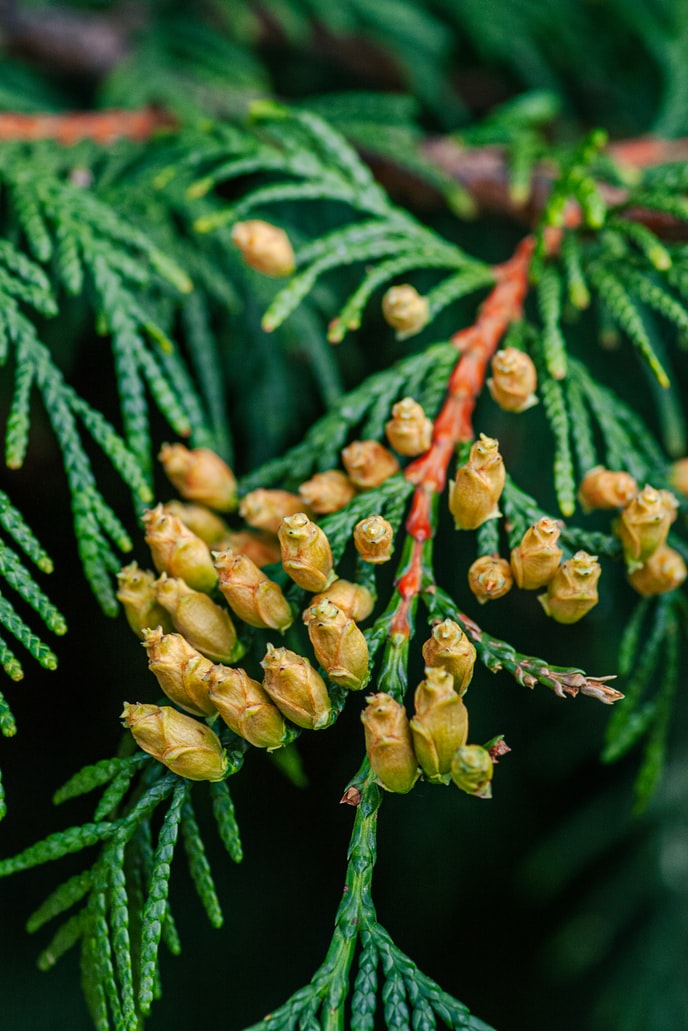
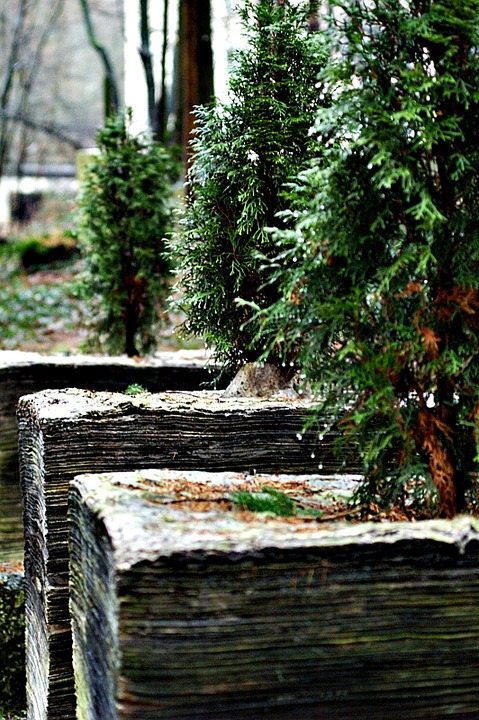
Care
Light. Thuja grows best in direct sunlight, but it can also withstand partially shaded places.
Temperature. Thuja occidentalis is a frost-resistant species, T. plicata has moderate resistance, and T. orientalis can be affected by severe frosts.
Soil. They grow optimally in damp, calcareous soils, which drain water well. They do not tolerate compact soils and excessive moisture, conditions that can favor the installation of diseases. Therefore, watering should be done moderately, only when the soil is dry on the surface.
Fertilization. In order to stimulate the rich growth of trees and shrubs, during the vegetative growth period, it is recommended to apply specific fertilizers.
Recommended products
-
You can find products on a different store
Change Store -
You can find products on a different store
Change Store -
You can find products on a different store
Change Store -
You can find products on a different store
Change Store -
You can find products on a different store
Change Store -
You can find products on a different store
Change Store -
You can find products on a different store
Change Store -
You can find products on a different store
Change Store -
You can find products on a different store
Change Store -
You can find products on a different store
Change Store -
You can find products on a different store
Change Store -
You can find products on a different store
Change Store -
You can find products on a different store
Change Store -
You can find products on a different store
Change Store -
You can find products on a different store
Change Store -
You can find products on a different store
Change Store -
You can find products on a different store
Change Store -
You can find products on a different store
Change Store -
You can find products on a different store
Change Store -
You can find products on a different store
Change Store -
You can find products on a different store
Change Store -
You can find products on a different store
Change Store -
You can find products on a different store
Change Store -
You can find products on a different store
Change Store
Pruning. These are trees that are suitable for shape correction cuts. However, T. orientalis does not tolerate pruning very well. The cuts to maintain the shape of the tree/shrub have to be done annually, in May. Only the annual tendrils have to be cut, not the old branches.
Recommended products
-
You can find products on a different store
Change Store -
You can find products on a different store
Change Store -
You can find products on a different store
Change Store -
You can find products on a different store
Change Store -
You can find products on a different store
Change Store -
You can find products on a different store
Change Store -
You can find products on a different store
Change Store -
You can find products on a different store
Change Store -
You can find products on a different store
Change Store -
You can find products on a different store
Change Store -
You can find products on a different store
Change Store -
You can find products on a different store
Change Store -
You can find products on a different store
Change Store -
You can find products on a different store
Change Store -
You can find products on a different store
Change Store -
You can find products on a different store
Change Store -
You can find products on a different store
Change Store -
You can find products on a different store
Change Store -
You can find products on a different store
Change Store -
You can find products on a different store
Change Store -
You can find products on a different store
Change Store -
You can find products on a different store
Change Store -
You can find products on a different store
Change Store -
You can find products on a different store
Change Store
Planting
Be sure to purchase planting material from authorized nurseries. It is very important to plant only plants that have soil on their roots. Planting can be done from autumn, after the first frost, until spring, when the soil is not frozen and there is no danger of frost. The plant has to be carefully removed from the pot/bag so as not to spread the soil too much. For successful planting, Thuja trees are recommended to be planted when they are still young, so they will adapt more easily to the new conditions. Immediately after planting, the soil around the plant has to be well-trodden and watered abundantly, to compact the soil and eliminate any air gaps around the roots.
Recommended products
-
You can find products on a different store
Change Store -
You can find products on a different store
Change Store -
You can find products on a different store
Change Store -
You can find products on a different store
Change Store -
You can find products on a different store
Change Store -
You can find products on a different store
Change Store -
You can find products on a different store
Change Store -
You can find products on a different store
Change Store -
You can find products on a different store
Change Store -
You can find products on a different store
Change Store -
You can find products on a different store
Change Store -
You can find products on a different store
Change Store -
You can find products on a different store
Change Store -
You can find products on a different store
Change Store -
You can find products on a different store
Change Store -
You can find products on a different store
Change Store -
You can find products on a different store
Change Store -
You can find products on a different store
Change Store -
You can find products on a different store
Change Store -
You can find products on a different store
Change Store -
You can find products on a different store
Change Store -
You can find products on a different store
Change Store -
You can find products on a different store
Change Store -
You can find products on a different store
Change Store
Propagation
Thuja species can be propagated through seeds or cuttings.
- the seeds have to be harvested in autumn and must be sown in spring, after which they must be left in place for 2 years.
- propagation through cuttings has to be done in summer, with portions of semi-lignified branches. It is a more difficult procedure, recommended for professionals.
Diseases and pests
Diseases that can affect Thuja trees are Berckmann’s Blight, which leads to the drying of plants. Among the pests that can infest Thuja trees, the most common is the European fruit lecanium.
In addition:
- due to the outer thickness of the crown, on the inside, the plant becomes bare. This is a natural phenomenon and it does not require any treatment.
- the variety with the fastest growth is T. plicata.
- these are trees that are well suited for urban environments.
- disease control treatments can be performed at any time of the year, provided that at the time of application, (and in the following hours) there is no precipitation. Also, the temperatures should not be very high and of course, depending on the time of year in which the treatment is performed, there should be no danger of frost.
- watering with sprinklers is not recommended.














































































































































































































































































































































































































































